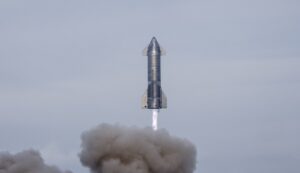NASA awarded a contract for the launch to Astra Feb. 26, valued at $7.95 million.
The agency said in the statement that it received five proposals last August for the mission. Besides Astra, two other small launch vehicle companies, Rocket Lab and Virgin Orbit, submitted bids. A fourth came from Momentus, which offers in-space transportation services for satellites launched on rideshare missions.
The fifth bid came from SpaceX, which has a smallsat rideshare program, bundling groups of cubesats and other small satellites on Falcon 9 launches. However, the company did not appear to offer launch services from that program for the TROPICS competition.
In its assessment of the bidders, NASA noted a weakness in SpaceX’s proposal because the company “did not clearly demonstrate progress toward the resolution of the environmental assessment which results in risk associated with obtaining an FAA launch license, increasing the likelihood of delays that would affect contract performance.”
The source selection statement also identified a significant weakness regarding the “risk to launch approach” for the mission, noting the company had not updated an integrated master schedule in its initial proposal. “As a result, there is significant risk in the proposed launch approach based on the required launch date and the current status of the proposed launch vehicle that increases the likelihood of unsuccessful contract performance.”
Neither criticism would appear to apply to SpaceX’s Falcon 9 and Falcon Heavy vehicles currently in service. Both vehicles have launch licenses from the Federal Aviation Administration, which updated an environmental assessment for launches from Cape Canaveral Space Force Station and Kennedy Space Center in July 2020. SpaceX has won a series of contracts for launches of larger NASA missions using those vehicles.
An intriguing possibility is that SpaceX instead offered its Starship vehicle under development. That vehicle has an FAA launch license today only for its current series of suborbital test flights. The FAA is also performing an environmental assessment of SpaceX’s Boca Chica, Texas, site for orbital launches of that vehicle. The agency recently published a “scoping summary report” outlining public comments it received in the scoping process of the assessment, but did not issue a schedule for the release of a draft version of the environmental assessment.
Starship would appear to be massively oversized for TROPICS. When launched with a booster called Super Heavy, Starship will be able to place more than 100 metric tons into low Earth orbit. SpaceX has previously suggested, though, that the Starship upper stage alone may be able to reach orbit, but without a significant payload. That could be sufficient for TROPICS, whose combined mass is about 56 kilograms.
SpaceX did not respond to requests for comment on its proposal for TROPICS.
In the source selection statement, NASA compared SpaceX’s proposal with that from Astra, whose Rocket 3 small launch vehicle has yet to reach orbit but which the company has declared orbit-capable after two test launches. Astra was cited for a weakness in its proposed launch site, citing development and range conflict issues. The statement did not disclose the launch site, but in the announcement of the contract last month, NASA said the launches would take place from Kwajalein Atoll in the Pacific Ocean.
While SpaceX also had a launch site risk “with obtaining an FAA launch license in time to support orbital test flights,” NASA concluded that the “risk in its launch approach based on the required launch date and current status of the proposed launch vehicle” was a bigger concern. That resulted in Astra being rated slightly higher than SpaceX regarding technical and management capability. SpaceX’s proposed price was also “somewhat higher” than Astra’s bid.
NASA also eliminated Virgin Orbit because its original bid did not fall in the “competitive range” the agency established, and it was the only bidder not asked to provide an updated proposal, due Feb. 5. Momentus was eliminated from consideration because its proposal did not demonstrate it could meet all the requirements of the launch services interface requirements document, which “places the government at extreme risk of unsuccessful contract performance.”
The competition came down to Astra and Rocket Lab, whose proposal had several strengths, but also a “significantly higher” price than Astra. NASA concluded that “after reviewing the benefits associated with Rocket Lab’s proposal and Astra’s assessed risk in combination with their significantly lower price, the technical benefits do not offset the significant difference in price” and selected Astra for launching the TROPICS mission.



